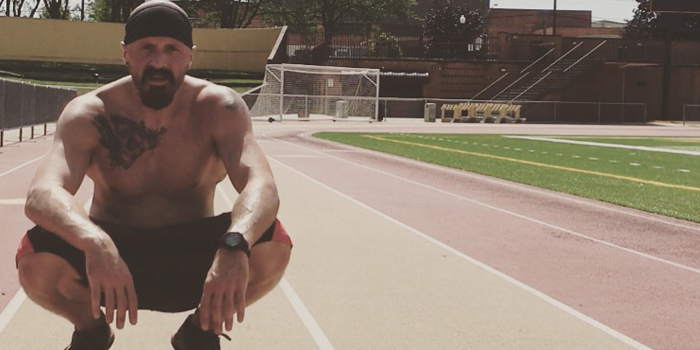
Strength and A 5k
In October 2018, I was finding my way back into powerlifting. I was finally feeling good both physically and mentally. For almost two years, I’d been battling depression. This will be touched on in a future article. But in November 2018, during a set of speed squats, a back injury that I’d been combating on and off for a few years came back with a vengeance. This time, it was the worst.
Take It Back
I always had an interest in running. I enjoyed it. It always seemed to help me mentally, and honestly, I feel it’s in all of our blood, and we are predisposed to endurance. Something about it just made me gravitate toward it, but every time I’d start running, I would quickly have right ankle pain and right big toe pain. So I just told myself I’ll never be able to run.
RECENT: Death to the Belly Breath
I had a bad right ankle injury in high school that I never let heal and just played through. Athletes gonna athlete — ya feel me? Ever since then, the entire chain from my right ankle up to my low back on the right side gave me issues. Every doctor I went to told me I’d never have a good ankle again.
I couldn’t even feel my hamstring on my right side. I wouldn’t feel a thing when I did Romanian Deadlifts with 585 pounds for reps. When squatting anything over 405 pounds, I would shift away from my right side.
I’d do all this hip stability and strength work because everybody around me said I had weak hips. Despite having a mid-600-pound deadlift, apparently I had weak hips, so I just kept hammering my glutes.
It was annoying.
It was aggravating.
It became my narrative.
It wasn’t until that last injury that I decided to say maybe it’s not my hips; maybe it’s the ankle that I injured 15 years ago. Maybe it was time to pay attention to that. So through a lot of research, trial, and error, I was able to increase the stability in my foot and ankle, which led to greater stability in my hip and low back. I even started to feel my right hamstring again.
I felt my career as a powerlifter was over for the time being, as every time I would get back into training, that injury would rear its head. I figured I would give running another try since my foot and ankle were starting to do foot and ankle things and my low back injury had recovered.

ammentorp © 123rf.com
Running and Strength
A thing many worry about is endurance training taking away from their strength gains. But if you look at the work done by Issurin in his block periodization book, you will see that aerobic endurance work and strength work are compatible training modalities. This was when I started to explore the idea of being able to develop my aerobic system and strength system concurrently. Sounds like a good job for the conjugate system.
Charlie Frances used the analogy that our body is like a cup, and stress is the water. If you overfill the cup, that’s when you run into issues. Training both endurance and strength could potentially overwhelm my body, so recovery had to be on point and volume had to be properly regulated. I also had to listen to my body. If I had a certain set and rep scheme planned for the day, but my body felt spent, I would cut back where need be. My exercise selection couldn’t allow for any wasted energy or movement. I had to focus on what was important and cut out what wasn’t.
Planning
Strength Plan
- Increase rate of force development (increase force and velocity) through the utilization of the max effort and dynamic effort method.
- Increase strength endurance through the utilization of the repetition effort method.
- Increase hypertrophy through the utilization of the repetition effort method
Running Plan
RELATED: Combining Dynamic Hip and Stabilization Drills for Runners
Like strength, there are various aspects of endurance. I needed to approach running just like strength training: logically. I can’t just go out and run and expect to get faster. Just like lifting, I can’t just go lift and see what happens. There has to be a logical progression and approach. So I used the conjugate method in my approach.
- Build an aerobic base (I see this similar to the repetition method) through the utilization of Zone 2 training (long, slow, low intensity, steady-state). This will be the majority of my training.
- Improve competition pace (I see this similar to the max effort method) through the utilization of tempo work (moderate intensity around my race pace for set time).
- Improve speed and power capabilities (I see this similar to the dynamic effort method) through the utilization of sprint intervals (high intensity 30 seconds to 4 minutes). This will be the smallest percentage of my endurance training.
Thoughts on Training
This was my thought process in regards to training.
- There is no single program for training both.
- I need to optimize the ideal plan for myself, as it’s highly individualistic.
- Fatigue will limit my endurance, and fatigue resistance is my goal.
- Training = Push.
- Fatigue the system = Induce adaptation.
- Heart is the biggest limiter to oxygen delivery.
- I need to increase the rate at which muscles can utilize oxygen. Need to improve oxygen delivery and waste disposal.
- I need to improve my circulatory system. Endurance work does this by improving the cardiovascular system (heart, lungs, vascular system). Zone 2 training is the best for this.
- Heart becomes stronger and more efficient.
- Increase in vascular network not only throughout the body but also to the heart. With an improved vascular network, we will also see an increase in stroke volume.
- Muscle perfusion increases, which improves oxygen delivery and waste clearance.
- Increased number of mitochondria.
- Tempo work needs to gradually increase in speed and get closer if not longer than race distance.
- Tempo work is important to improving race speed.
- I need a structured routine to allow for maximum recovery.
- Movement economy is important.
- VO2 max is important.
- Lactate threshold, one of the most important factors in endurance, may be the most adaptable component.
Programming Notes
I did a standard Tanaka calculation (208-0.7 x age) to establish my max heart rate.
Zone 2 training is typically 65 to 75 percent of your max heart rate. My Tanaka calculation was 185 so therefore my Zone 2 training would be done 120 to 140 (it’s 138, but I rounded to 140) on steady-state days.
READ MORE: Use the Air Bike to Train All 3 Energy Systems
I didn’t have a 5k time so I ran a mile at an RPE of eight and just multiplied that number by three and gave myself a 5k time. I understand this probably isn’t the best way to do this, but I’m new to this. I ran my mile in around 8:30. I haven’t run distance in a while, so a 5k seemed daunting — don’t judge me. This put me around a 25-minute finishing time for a 5k.
Tempo work progressed starting just slower than my race pace of 8:30 and over 12 progressed to my goal time of 7:45.
My 5k is my priority; not setting weight room PRs. So my endurance work became the focus.
Intervals were done at my target race pace and I used a 1:1 work:rest for my interval work.
For my max effort work, while not traditional in a max effort sense, I rotated between 5-3-1 for main movements. I understand true max effort work is one rep and one rep only.
I trained outside the sagittal plane for single-leg work. So much of powerlifting is done in one plane, and I felt this was contributing to some of my injuries. #strongoutsidesagittal
I did my best to program higher intensity earlier in the week and lower intensity later in the week with both weights and running to allow for proper recovery.
A 5k is 3.1 miles. My goal for the race, just like a first powerlifting meet, was to get a time. For training, I used 8:30 mile from that first mile as my starting time that I based everything off of along with a heart rate monitor that I used for Zone 2 training. I did have a goal of running under an eight-minute pace/finishing in under 24 minutes. So I used these times for all my tempo and interval work progressions.
As far as strength training, I couldn’t do a traditional upper/lower split like I normally would utilizing conjugate because of my work schedule. I instead ran a full body split utilizing conjugate concepts that looked like this (click images for full size):
Results
I injured my left knee three days before the race. I’m not sure what, how, or why — I just woke up and had pain. Some orthopedic testing showed all my ligaments were intact.
Athletes gonna athlete, so I ran the race. I felt the knee for the first quarter-mile, then it magically went away but after the race and four weeks later it’s still bothering me.
BUT...
I ran a 23:49 chip time (my watch said 22:50) and came in at a 7:40 pace. I took 38th out of 574 (anybody can run and/or walk) and took 33rd in my division. The guy who won it ran a 17:41, and I’m pretty sure he ran there and Forrest Gump-ed his way through the finish line and kept running.
I hit my goal and got a time established to work off of. Now I need to figure out what caused the knee injury, rehab it, and do a 10k, and eventually work my way up to a 50k if my body can hold it together.
Time will tell.
Follow me on the gram @nic_bronkall for my training and updates.











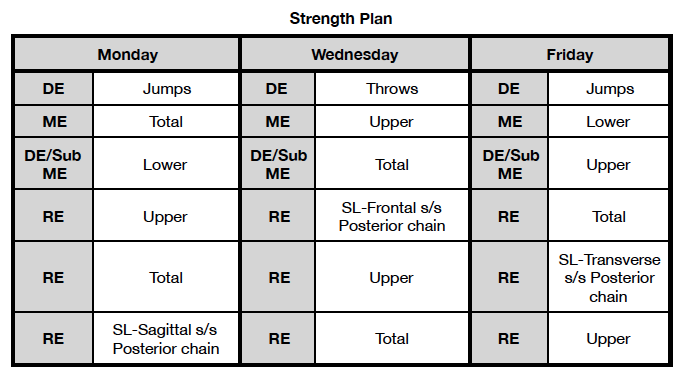
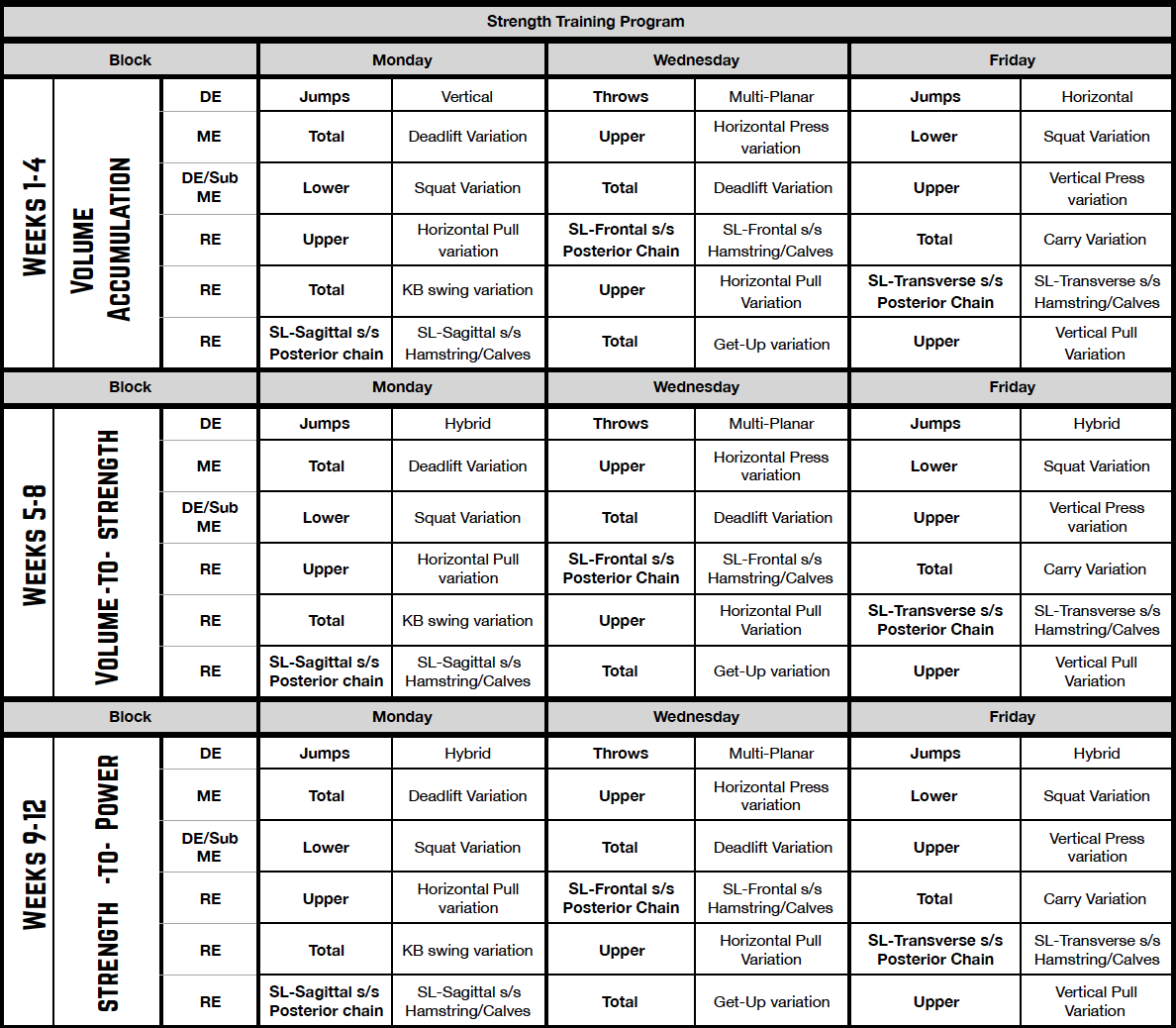
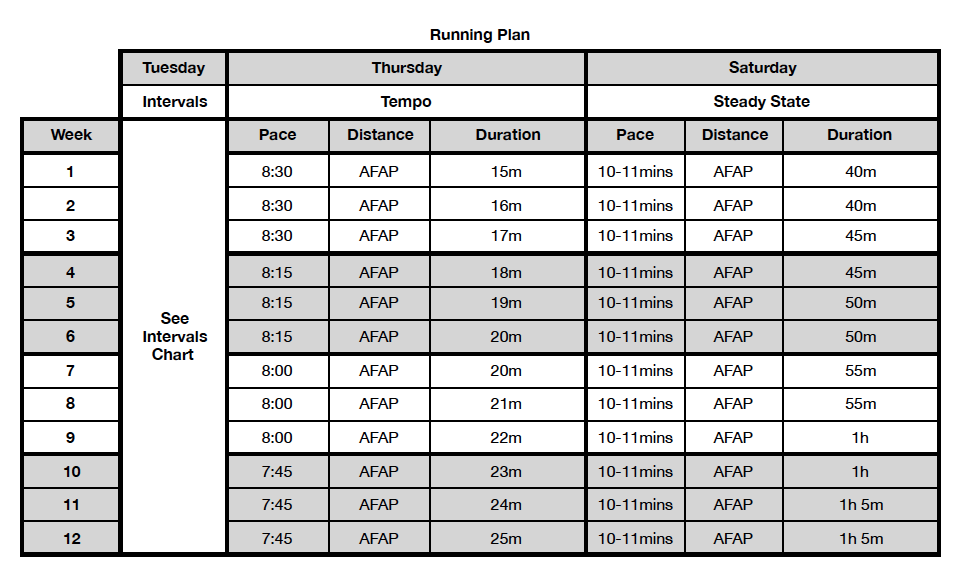
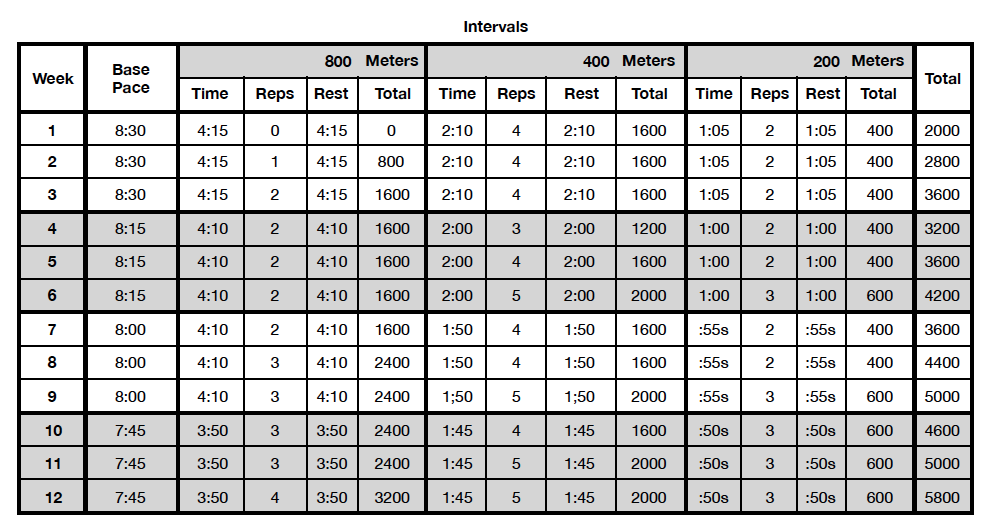

thanks for this article. I found it really interesting. I think I also have ankle weakness. If you don't mind sharing, what are some of the things you did to build ankle strength?
Thanks
@Jeff I'm 33
@Steve I agree 100%. I believe when programmed correctly strength training in the weight room and running is an amazing combination.